My husband has a very bad memory; he always says that he’ll remember things from his childhood only when told the stories. Memory is a funny thing, some memories are evoked through smell or taste, sometimes I find myself feeling nostalgic and I can’t quite put my finger on what has triggered it.
I don’t specifically remember making mud pies or potions in the garden as a child; I know I did as there are photos of me with my hands gloriously immersed in a wheelbarrow of wet, oozy mud. I also vaguely remember making potions in the playground, but there are no concrete memories there. I do remember, at about 8 years old, being fascinated with witchcraft and begging for a book of spells. As a teenager I took after my father and studied Chemistry at A-level, a subject I rather enjoyed and found relatively easy. As a parent of young children, I understand how important making mud pies and potions in the garden is; it’s all about experimentation and the child’s natural inner scientist, they are learning about the world. It’s all connected.
Recently I have found myself drawn to alternative photographic processes and experimenting with my photography. With a spare roll of cheap black and white film, I came across the idea of souping the film. Working on this concept over the past couple of months has brought back those feelings of witchcraft and it’s made me feel like I’m back creating potions in the garden. However, now I am drawing on my chemistry understanding and my photographic understanding to create and experiment.
With film souping the results are never guaranteed but my experiments begin with scientific ideas and hypothesis, then I test, and finally I learn from the results. I’m sharing here my first three tests, how I came to the ideas and what I’ve learnt.
Test 1
After researching the concept I noticed that most examples of film souping are in colour, this is because most people are drawn to the wacky colour shifts that can occur. Black and white film is much more rarely used. Looking through the recipes, and I use the term recipes lightly, I drew conclusions about which ingredients would have little or no effect on black and white, for example I feel Kool-Aid is likely to have more effect on colour than black and white.
For the first test I went for washing up liquid and boiling water with the hypothesis that heat and bubbles would affect the film. I had shot the roll of 35mm film through my Pentax ME Super, I placed it in a Tupperware base, covered in washing up liquid and poured boiling water over the whole thing. I then left this mixture to stand for 24 hours, poured away the liquid and gently rinsed and then left the canister of film to dry for 4 full weeks.
From my reading, if you don’t let it completely dry, it is an absolute nightmare to load into the developing tank. After the 4 weeks were up, I developed as normal.
Interestingly the heat mostly affected the first images on the roll with the overall effects of the souping becoming more subtle as we got to the end of the roll. Likely the images on the end of the roll were protected by those wrapped around them.
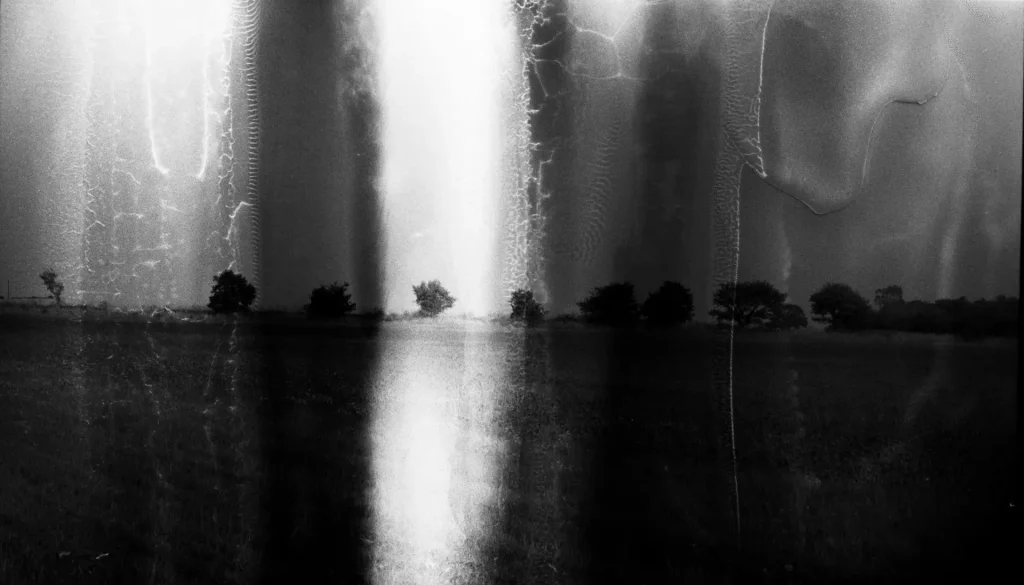
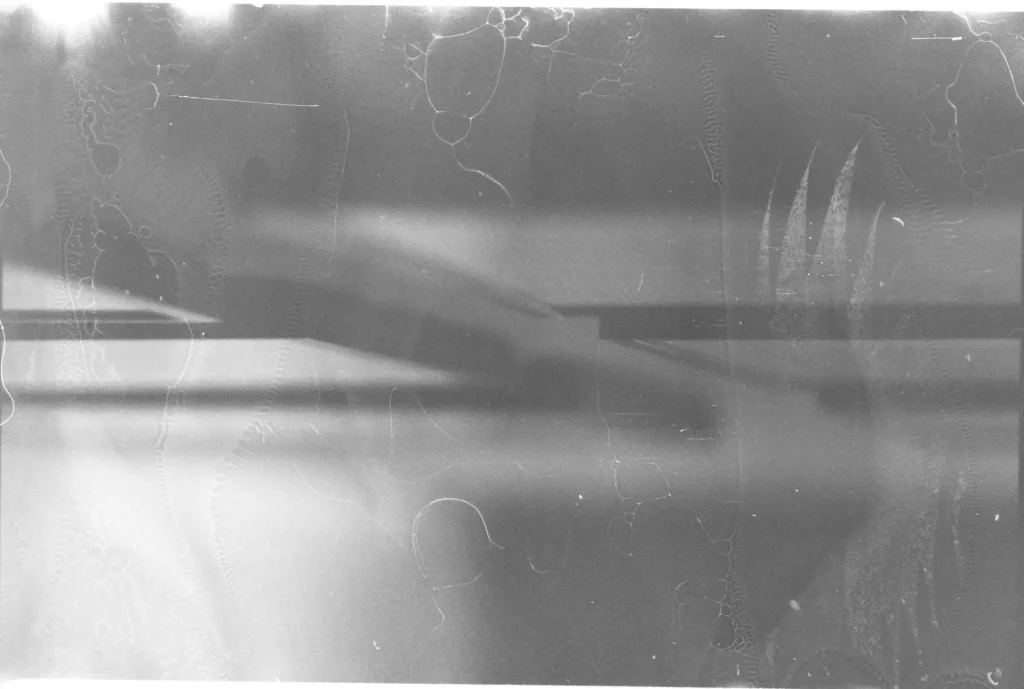
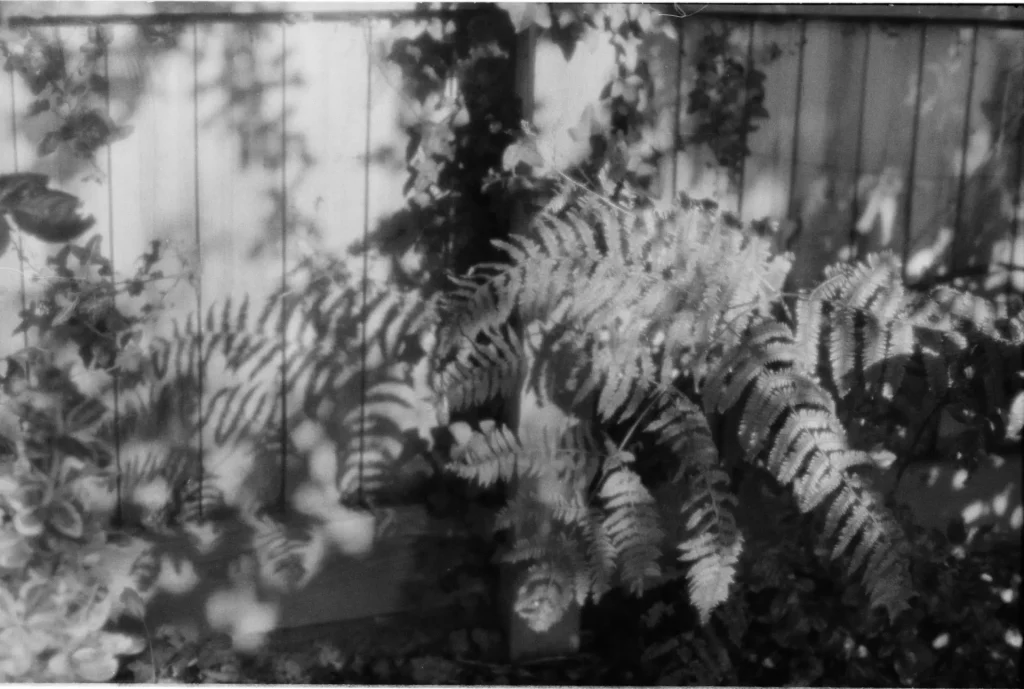
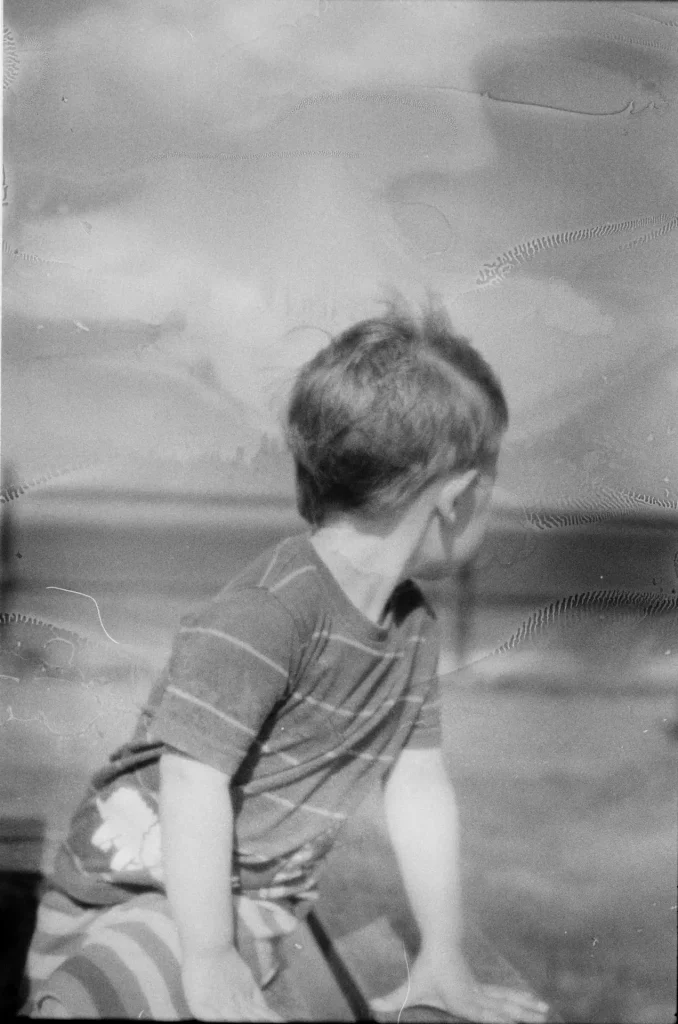
Test 2
I wanted to have a go at souping medium format film. I’ve got a few ideas for this so I picked one of those at random, which was to try an unexposed roll of film (i.e. not put through a camera first). With 120 film you need to load it into the developing tank in order to soup and this has two effects to consider; you will not need such a long drying time as you do not need to subsequently load it into the tank, it is already there and; the effects of your soup will be more evenly spread as the film is not tightly wound into a canister.
Knowing that the soup would be more even in coverage I wanted to choose something that by its very nature would be uneven. I settled for olive oil knowing that oil will not dissolve or dilute in water. Many people use salt in their soups, regardless of colour or black and white, this causes speckling on the negatives and I thought that would be a nice addition. Finally after a conversation with a friend I decided to partially expose the whole film to light and so, after loading it into the tank, I very briefly pulled it out in a dimly lit room.
Once exposed to light, I poured in some oil and salt, swirled and then poured in boiling water. I left to soup, with occasional agitation for 24 hours. I drained, rinsed and then left for another 24 hours to dry. I then developed as normal for the film stock (Ilford FP4+).
As oil was used the negatives remained greasy and after 24 hours drying (after development) I needed to wipe them down enough to get them into a film wallet. The results were a surprise and not quite what I had expected but this is how we learn!
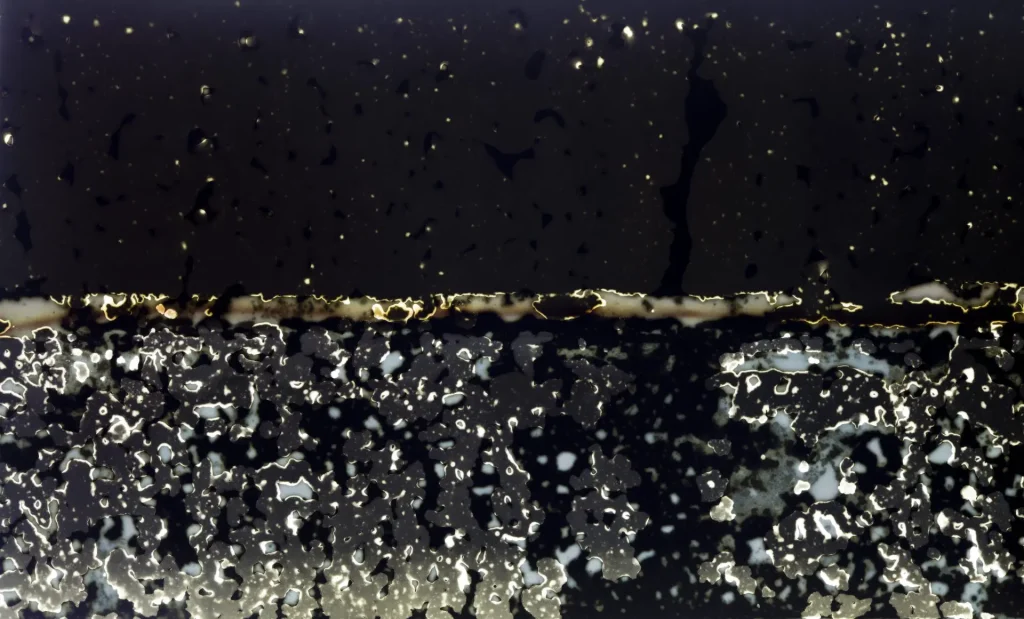
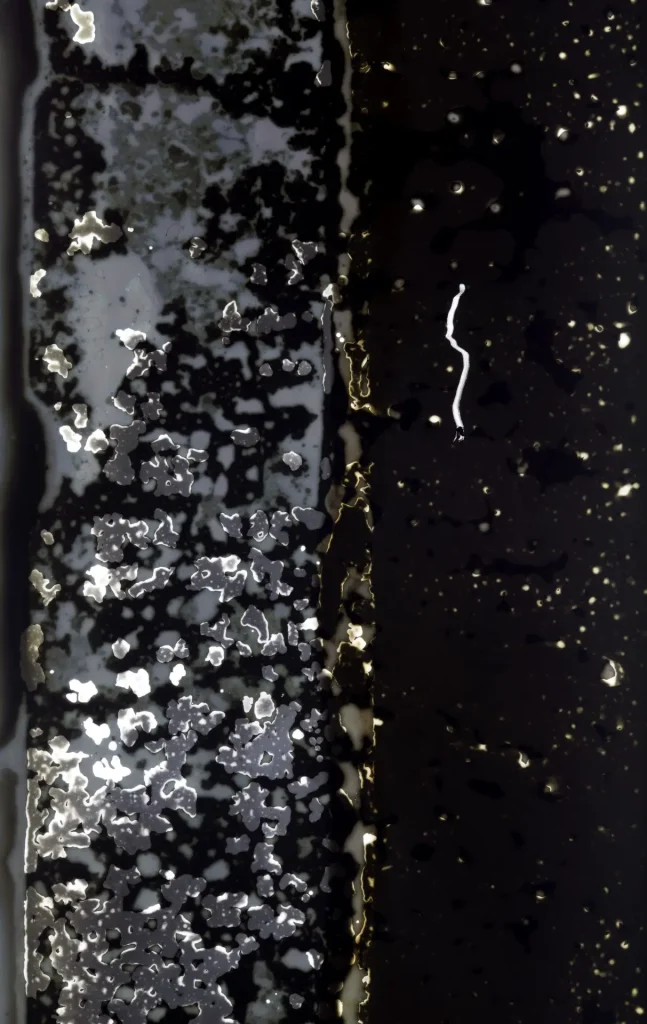
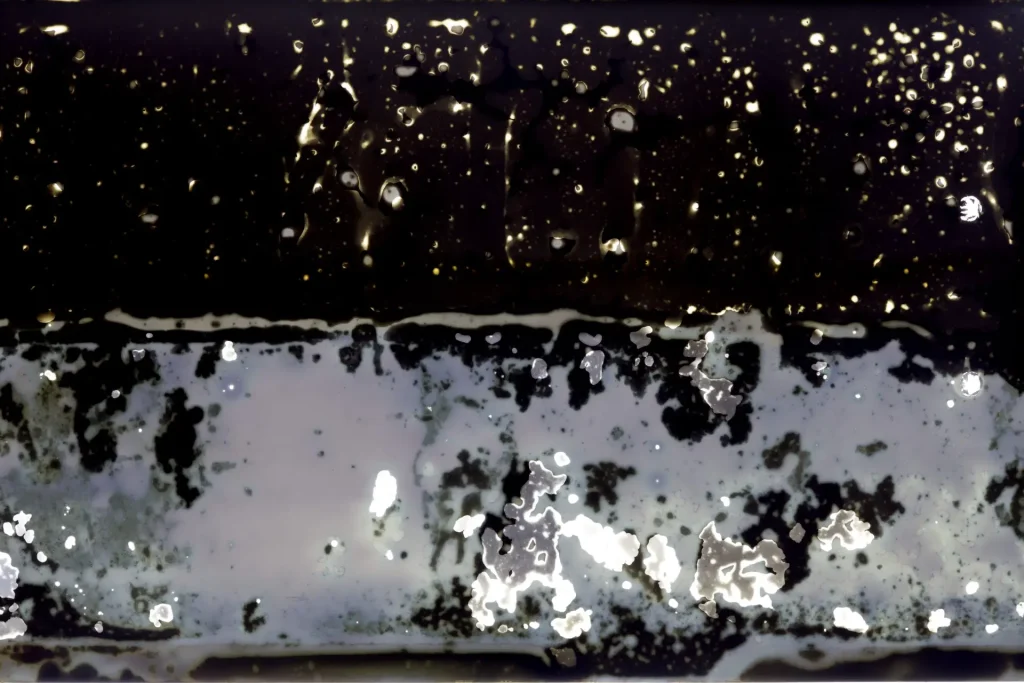
Test 3
I wanted to have another go with medium format but this time with images. I decided to shoot a roll of film down on the beach near my house and when trying to decide what to soup in, I settled on the idea of using the sea water from the location.
I loaded the exposed film into the tank and poured in the sea water. I didn’t heat this mixture but did agitate occasionally over a 24 hour period. I then poured the soup away, which was a very alarming, vivid, green colour! I opted to leave this to dry for a week as I wanted any salt from the sea water to really crystallise on the negative.
I developed as per instructions for Fomapan 200, the film stock used, and out came a set of washed out negatives. Very low contrast but at least there were images. When I poured out the green liquid I was convinced I’d washed away the exposures!
The souping effect on this film is very subtle. I don’t know if the washed out nature of the images is a result of the soup or the film stock, I haven’t used Fomapan before. There is also an unusual, almost light leak at the edges of many of the images which I can’t quite place. I would usually point to the camera and say there was a malfunction but it’s not happened on this camera before so is it the soup? Finally the salt in the sea has speckled the images but the effect is far more delicate than I had anticipated. Perhaps the salt grains would seem larger on a 35mm negative?
I rather like the soft, washed out, meditative feeling from these images.
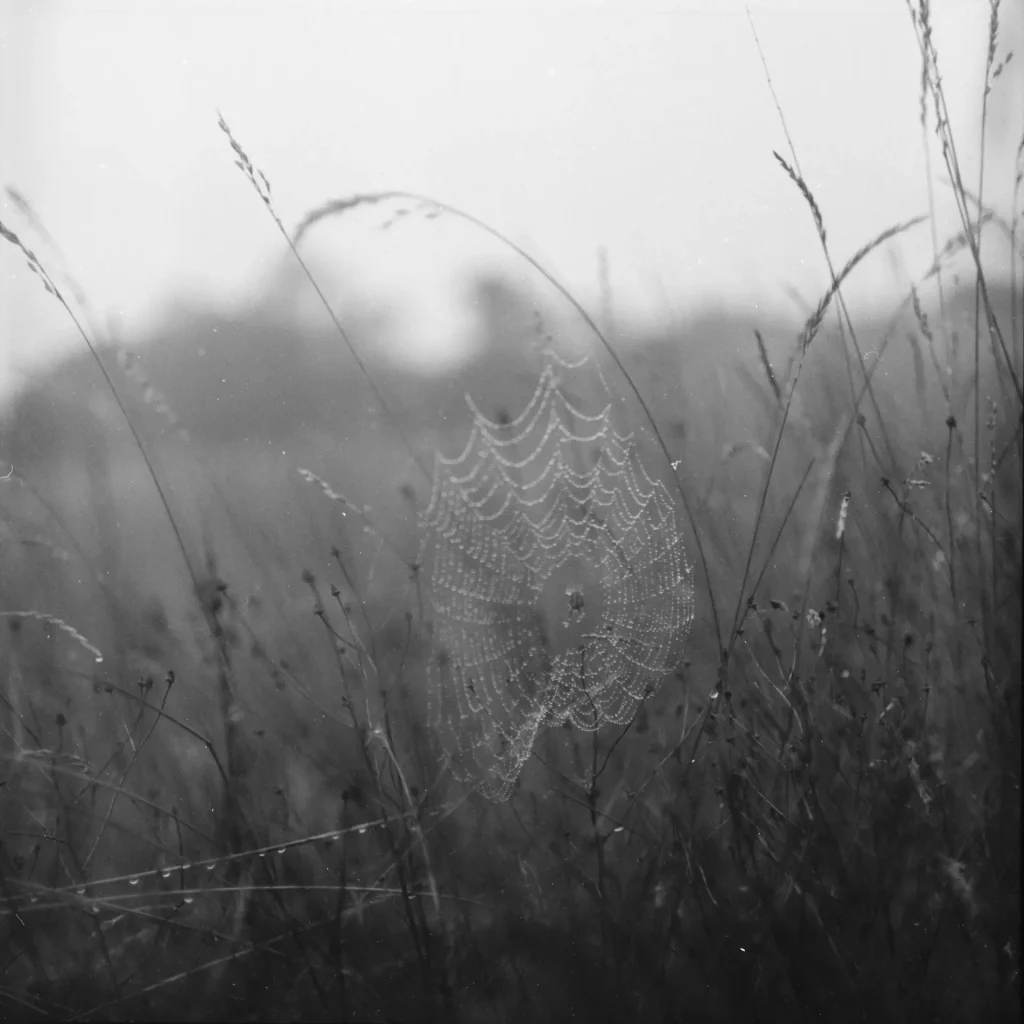
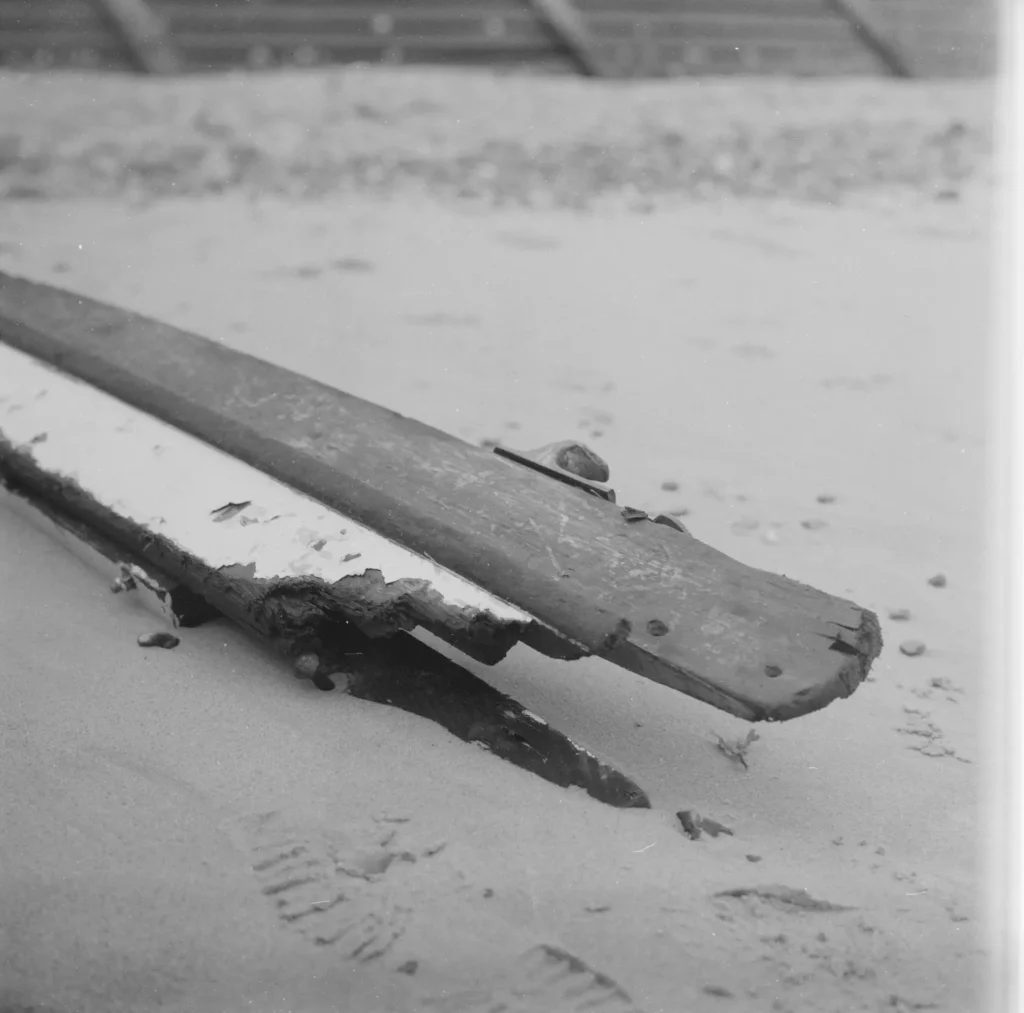
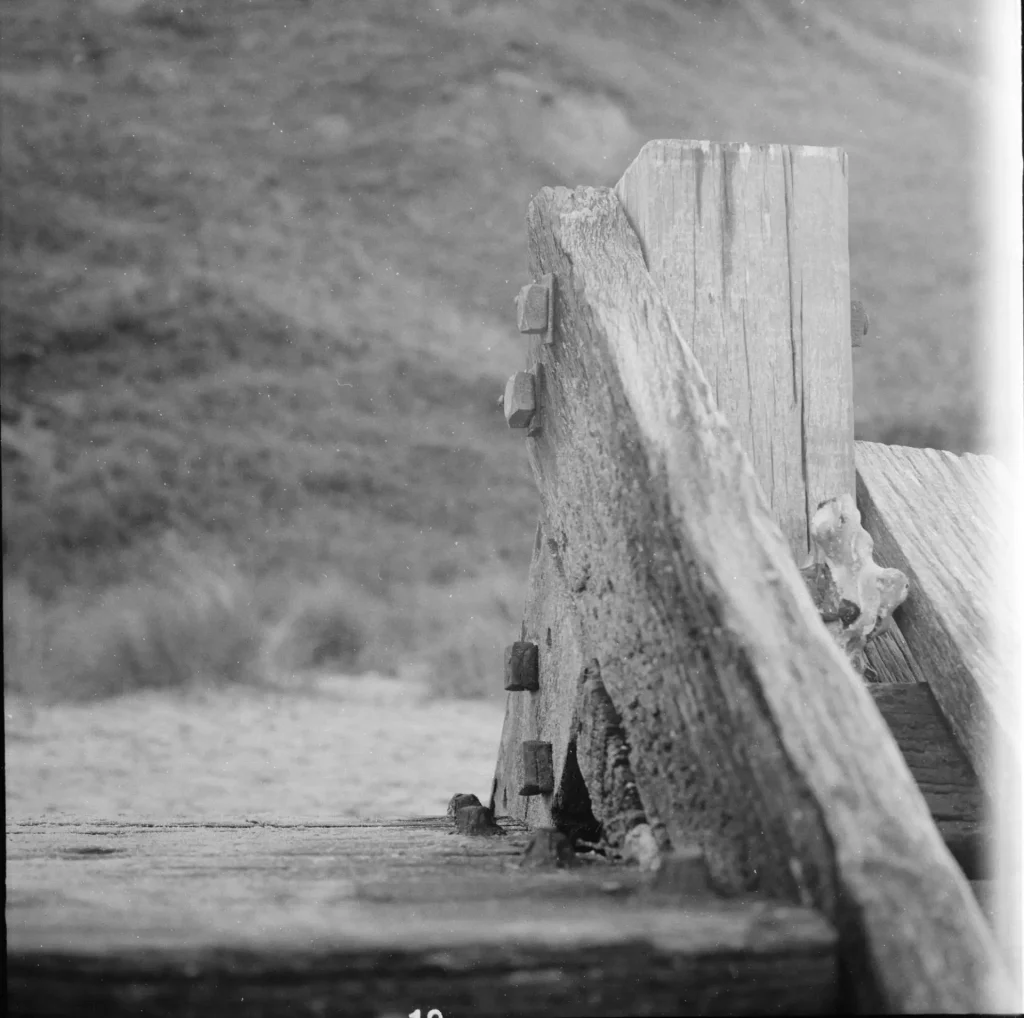
Conclusion
Don’t soup film if you fear the unknown. This is trial and error in all its beauty.
If you are interested in seeing some more of my experiments you can find my work on my learning log, or on Instagram.
Share this post:
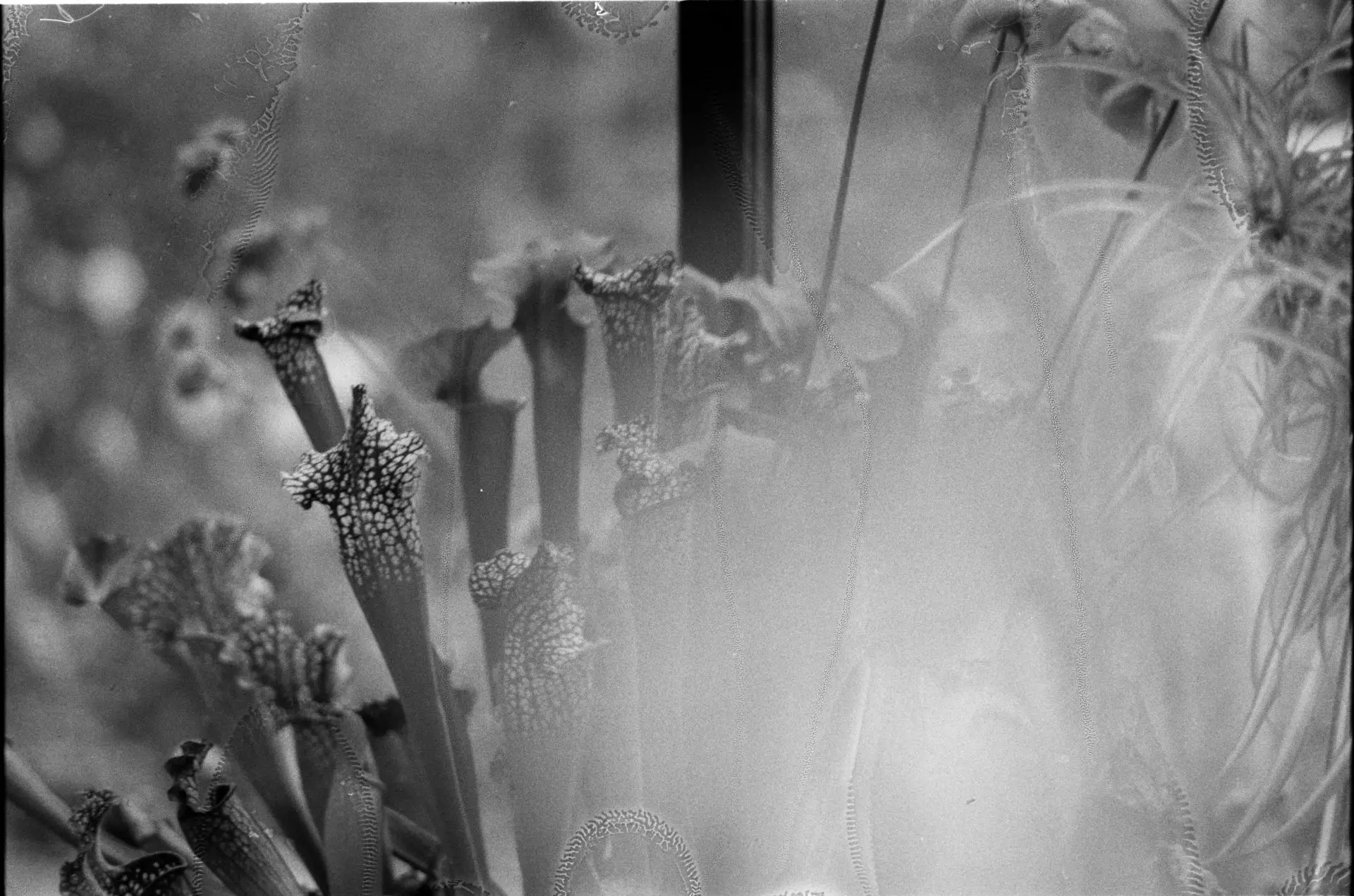








Comments
Donald on Experiments in Film Soup – By Holly Gilman
Comment posted: 04/12/2020
Comment posted: 04/12/2020
Comment posted: 04/12/2020
Kevin Ortner on Experiments in Film Soup – By Holly Gilman
Comment posted: 04/12/2020
I'm wondering how much salt you added in the second one? I doubt it was much, but I recall reading that high concentrations of salt in water can actually act as a fixer. Either way, those images might actually print very well for some abstract art.
Thanks for sharing!
Comment posted: 04/12/2020
Kevin Ortner on Experiments in Film Soup – By Holly Gilman
Comment posted: 04/12/2020
The way in which we use film is amazing (bizarre?).
Comment posted: 04/12/2020
CP93 on Experiments in Film Soup – By Holly Gilman
Comment posted: 04/12/2020
Comment posted: 04/12/2020
Louis Sousa on Experiments in Film Soup – By Holly Gilman
Comment posted: 04/12/2020
Comment posted: 04/12/2020
Christopher James on Experiments in Film Soup – By Holly Gilman
Comment posted: 05/12/2020
Comment posted: 05/12/2020
Huss on Experiments in Film Soup – By Holly Gilman
Comment posted: 05/12/2020
https://www.lomography.com/magazine/284773-pee-film-soak-by-brigette-bloom
Comment posted: 05/12/2020
David Hill on Experiments in Film Soup – By Holly Gilman
Comment posted: 05/12/2020
Keep us posted. This is fun.
Comment posted: 05/12/2020
Bruno Chalifour on Experiments in Film Soup – By Holly Gilman
Comment posted: 09/12/2020
"my experiments begin with scientific ideas and hypothesis" Really?:
"For the first test I went for washing up liquid and boiling water with the hypothesis that heat and bubbles would affect the film."
"With 120 film you need to load it into the developing tank in order to soup and this has two effects to consider"
Why is 120 film different from 35 mm both can be processed in the same ways, the tools have just to be the appropriate ones, isn't it?
"I loaded the exposed film into the tank and poured in the sea water. I didn’t heat this mixture but did agitate occasionally over a 24 hour period. I then poured the soup away, which was a very alarming, vivid, green colour! "
Real science would have informed you 1- that salt was once tried to fix film (which probably explains the washed-out result) , 2-that the green liquid is just part the anti-halo and sort of wetting agent coating of the film.
Comment posted: 09/12/2020